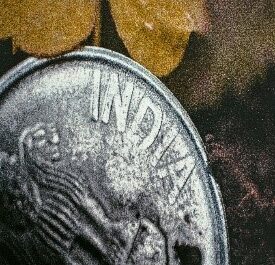| Overview: This guide examines the fundamental FD and RD differences to help you choose the right savings instrument. We’ll compare fixed deposits and recurring deposits across interest rates, investment patterns, liquidity, and suitability for different financial goals, providing practical examples and calculations to inform your decision. |
Understanding Fixed Deposits and Recurring Deposits
When planning your financial future, understanding the difference between fixed and recurring deposit options becomes crucial. According to recent RBI data, Indians hold over ₹15 lakh crore in fixed deposits, showing their enduring popularity as savings instruments.
Fixed deposits (FDs) and recurring deposits (RDs) represent two popular savings avenues. The fundamental FD and RD difference lies in how you invest: FDs require a one-time lump sum deposit, while RDs involve regular monthly contributions. This core recurring deposit and fixed deposit difference shapes how these instruments fit into your financial strategy.
Key Features: Fixed Deposit vs Recurring Deposit
The fixed deposit and recurring deposit difference becomes clear when we examine their core features:
Fixed Deposit Characteristics
- Investment Pattern: One-time lump sum amount
- Tenure Options: Flexible periods ranging from 7 days to 10 years
- Interest Calculation: Applied to the entire principal amount from day one
- Premature Withdrawal: Possible with penalty charges (typically 0.5-1%)
- Loan Facility: Most banks offer loans against FDs (usually up to 90% of the deposit value)
Airtel Finance Fixed Deposits offer competitive interest rates starting from 7.5% p.a., with additional benefits for senior citizens and women depositors.
Recurring Deposit Features
- Investment Pattern: Fixed monthly instalments
- Tenure Options: Usually from 6 months to 10 years
- Interest Calculation: Calculated on the deposited amount as it grows monthly
- Premature Withdrawal: Allowed with a penalty on incomplete tenure
- Ideal For: Disciplined monthly savers with regular income
The differences between recurring deposits and fixed deposits make each suitable for different financial temperaments. RDs foster disciplined saving habits, while FDs maximise returns on existing lump sums.
Interest Rate Comparison: FD vs RD
One common question is, “What is the difference between FD and RD interest rates?” Generally, both offer similar rates, but the difference between RD and FD interest rates lies in how returns accumulate:
| Aspect | Fixed Deposit | Recurring Deposit |
| Interest Application | On entire principal from day one | On increasing balance as monthly deposits accumulate |
| Compounding | Typically quarterly | Usually quarterly on progressive balance |
| Effective Returns | Higher for same amount since entire sum earns interest from the beginning | Lower since deposits accumulate gradually |
Sample Calculation: Returns Comparison

Let’s understand the difference between recurring and fixed deposit returns with a calculation:
Scenario: Investing ₹1,20,000 for 1 year at 7% interest
FD Calculation:
- Principal: ₹1,20,000
- Interest: ₹1,20,000 × 7% = ₹8,400
- Maturity Amount: ₹1,28,400
RD Calculation (₹10,000 monthly):
- First month’s interest: ₹10,000 × 7% × (12/12) = ₹700
- Second month’s interest: ₹10,000 × 7% × (11/12) = ₹642
- And so on…
- Approximate maturity amount: ₹1,24,550
This clear difference between fixed deposit vs recurring deposit interest rate impact demonstrates why FDs yield higher returns for the same total investment amount.
Which Option Suits Your Financial Goals?
The difference between FD and RD becomes particularly relevant when matching them to specific financial objectives:
When FDs Work Better
- Lump Sum Availability: When you receive a bonus, inheritance, or property sale proceeds
- Tax Planning: For senior citizens seeking tax benefits under Section 80TTB
- Emergency Fund: Creating a ladder of FDs with different maturities for liquidity
Check the potential returns of your investment and interest rates before committing your funds.
When RDs Are Ideal
- Regular Income Earners: Salaried individuals who can set aside fixed amounts monthly
- Goal-Based Saving: Building funds for specific purposes like education or wedding
- Habit Formation: For those developing disciplined saving habits
| Pro Tip: For maximum flexibility, consider a hybrid approach—invest lump sums in FDs and maintain an RD for regular savings, thereby addressing different financial needs through both fixed deposits and recurring deposits. |
Real-Life Scenarios: Making the Right Choice
Let’s take a look at two real-life scenarios to get a better understanding.
Scenario 1: The Young Professional
Riya, a 28-year-old software engineer, receives a yearly bonus of ₹3 lakh. She wants to save for a down payment on a house in 3 years.
Best Option: Fixed Deposit
Why: The lump sum can earn interest immediately, maximising returns over the entire period. What is the difference between RD and FD that matters here? The ability to put the entire amount to work immediately.
Scenario 2: The Disciplined Saver
Vikram, a 35-year-old teacher with a monthly salary of ₹45,000, wants to save for his child’s education fund over 10 years.
Best Option: Recurring Deposit
Why: Regular monthly contributions align with his income pattern. The FD and RD difference that’s relevant is the ability to build savings gradually without requiring a large initial investment.
Wrapping Up
The choice between FDs and RDs ultimately depends on your financial situation, goals, and saving habits. The key FD and RD difference centres on investment pattern, returns calculation, and how they complement your financial behaviour. Fixed deposits work best when you have a lump sum amount and want guaranteed returns, while recurring deposits are ideal for building savings through regular contributions.
Consider your saving habits, financial goals, and liquidity needs when making this decision. For those seeking competitive rates with flexible options, explore Airtel Finance fixed deposit interest rates to maximise your savings potential.
FAQs
1. What is the main difference between FD and RD investment patterns?
FDs require a one-time lump sum investment, while RDs involve regular monthly deposits of fixed amounts, making them suitable for different saving habits.
2. Can I get a loan against both fixed and recurring deposits?
Most banks offer loans against FDs (up to 90% of the deposit value), while loans against RDs are less common and may have stricter conditions.
3. Is there a difference between recurring and fixed deposit taxation?
No significant difference exists. Interest earned on both FDs and RDs is taxable as per your income tax slab rate if it exceeds ₹10,000 annually.
4. What is the difference between FD and RD for premature withdrawal penalties?
Both typically charge penalties for premature withdrawal, usually a 0.5-1% reduction in the applicable interest rate, though policies vary by bank.
5. How does the difference between fixed deposit vs recurring deposit interest rate calculation affect returns?
FDs earn interest on the entire principal from day one, while RDs earn interest on the accumulating balance, resulting in slightly lower effective returns for RDs.



